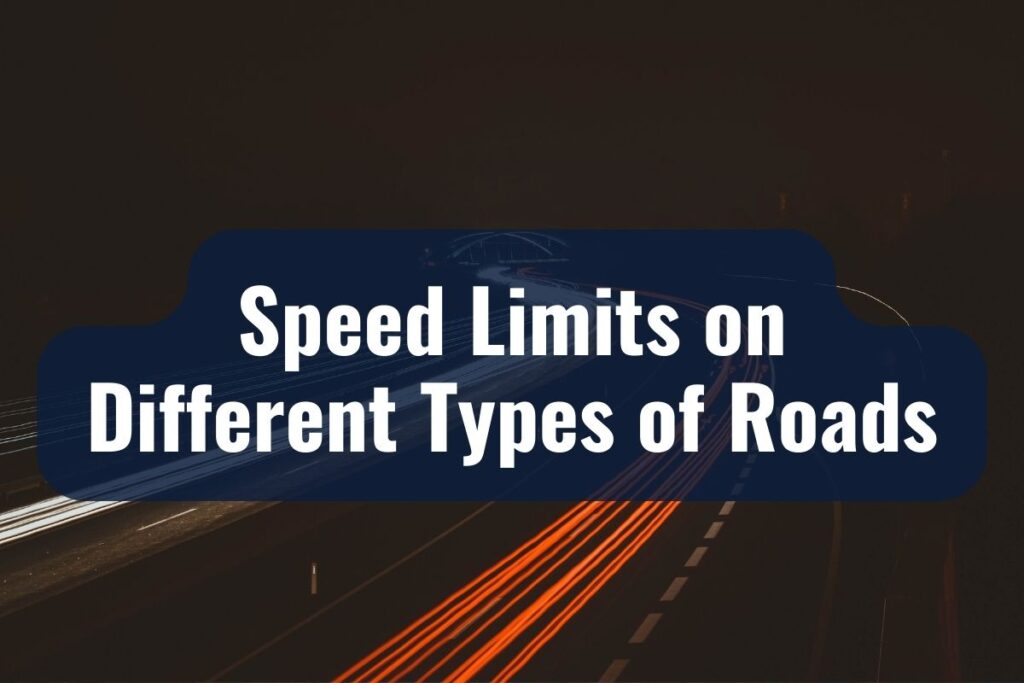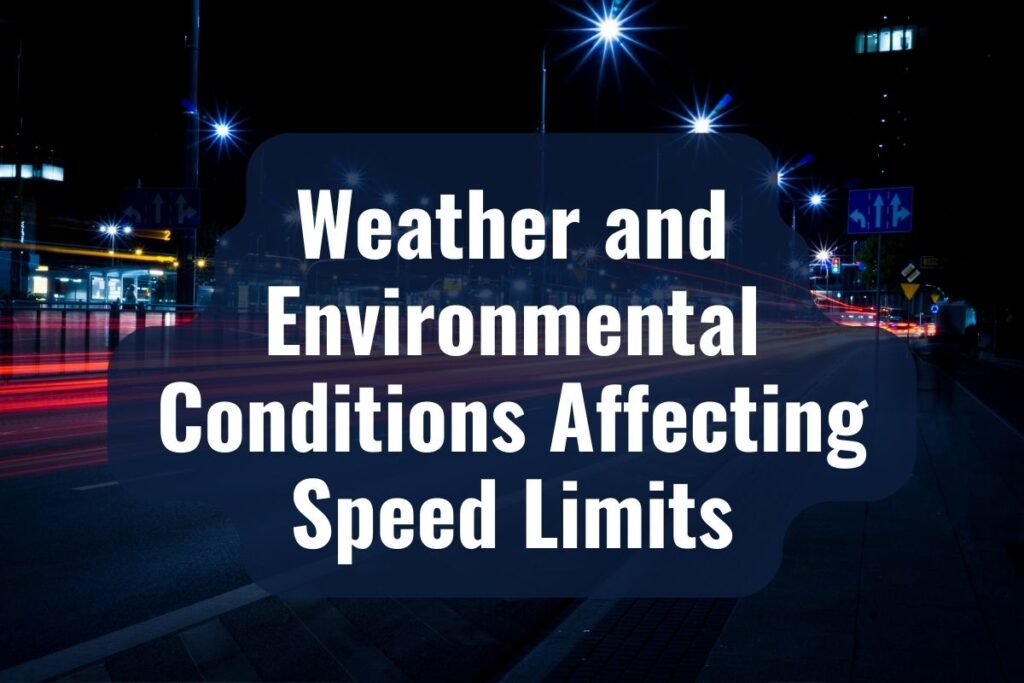As a foreigner in France, it’s important to recognize that driving habits and rules may differ significantly from those in your home country. Speed limits, in particular, vary depending on various factors like the type of road, the vehicle you’re driving, and even weather conditions.
This guide aims to provide you with a comprehensive understanding of these limits, helping you navigate French roads safely and confidently. Let’s embark on this journey to understand the intricacies of speed limits in France, ensuring your driving experience here is both enjoyable and within the legal framework.
KEY TAKEAWAYS
- Familiarize yourself with varied speed limits for different road types and conditions in France.
- Speed limits in France are strictly enforced through cameras and police checks.
- Adapting driving speed to weather and environmental conditions is crucial for safety.
- Technology like GPS can assist in staying informed about current speed limits.
- Understanding and respecting local driving culture enhances road safety.
Overview of Speed Limits in France
Understanding the speed limits in France is a key aspect of driving safely and legally in the country. Several factors, including the type of road, the area, and specific conditions like weather or visibility determine speed limits in France. These limits are carefully calibrated to ensure the safety of all road users, including drivers, passengers, pedestrians, and cyclists.
In France, speed limits are typically indicated by road signs. These signs are not only a guide but also a legal requirement that must be followed. The standard speed limit sign in France is a circular sign with a red border and a number in the middle, indicating the maximum speed in kilometers per hour (km/h). It’s crucial for drivers, especially those new to France, to familiarize themselves with these signs and adhere to the indicated speeds.
The French government has established these limits after considering various factors such as road conditions, traffic density, and accident rates. The aim is to balance safety with the efficiency of traffic flow.
For example, in urban areas where pedestrian traffic is high and roads are narrower, speed limits are generally lower. In contrast, on highways and expressways where vehicles are the only road users, the limits are higher, allowing for faster travel.
Additionally, France has a unique system where speed limits can change under certain conditions. For instance, during adverse weather conditions like rain or snow or in areas with reduced visibility, speed limits may be lowered to enhance safety. These conditional limits are indicated by additional signs or electronic display panels that drivers need to be attentive to.
Speed Limits on Different Types of Roads

Navigating through the diverse landscapes of France, drivers encounter various types of roads, each with its own set of speed limits. Understanding these limits is crucial for safe and legal driving. Here, we will explore the speed limits that apply to different road types in France, from the bustling city streets to the expansive highways.
| Road Type | Speed Limit (Dry Weather) | Speed Limit (Wet Weather) |
| Urban Areas | 50 km/h | 50 km/h (or lower in zones) |
| Rural Roads | 80 km/h | 80 km/h |
| Highways/Expressways | 130 km/h | 110 km/h |
| Special Zones | Variable (as per signage) | Variable (as per signage) |
Urban Areas
In urban areas, including cities and towns, the speed limit is generally set at 50 km/h. This limit is designed to ensure the safety of not only drivers but also pedestrians and cyclists who share these roads.
In some residential areas or near schools, you might encounter zones with a reduced limit of 30 km/h or even 20 km/h, known as “zone 30” or “zone de rencontre” respectively. These areas are marked with specific road signs, and extra caution is advised.
Rural Roads
Once you leave the urban areas, the speed limits increase. On rural roads, which often include two-lane routes through the countryside, the standard speed limit is 80 km/h.
These roads may have varying conditions and include undivided lanes without central barriers, so it’s important to drive cautiously, keeping an eye out for sudden turns, intersections, and changes in road quality.
Highways and Expressways
France’s autoroutes (highways) and expressways allow for higher speed limits, facilitating longer-distance travel across the country. On these roads, the standard speed limit is 130 km/h in dry weather conditions.
However, in rainy weather or other adverse conditions, this limit is reduced to 110 km/h. These roads are well-maintained and designed for higher speeds, but it’s crucial to stay alert, especially in heavy traffic or poor weather.
Special Zones
There are also special zones where the speed limit may differ from the standard due to specific local conditions. These include areas around construction sites, accident zones, or sections of road with unique hazards. In such cases, temporary speed limit signs are placed to guide drivers. It’s important to be vigilant and adapt your speed accordingly in these zones.
Speed Limits Based on Vehicle Type
In France, speed limits are not only determined by the type of road but also by the type of vehicle being driven. This differentiation recognizes the varying capabilities and safety requirements of different vehicles. As a foreign driver, it’s important to understand how these limits apply to your vehicle.
Personal Cars
For personal cars, which include most passenger vehicles, the standard speed limits discussed earlier apply. These are 50 km/h in urban areas, 80 km/h on rural roads, and 130 km/h on highways in dry conditions (110 km/h in wet conditions). These limits were designed considering the general performance and handling characteristics of standard passenger cars.
Commercial Vehicles
Commercial vehicles, such as trucks and buses, have different speed limits due to their size, weight, and the nature of their use. On highways, the limit for these vehicles is typically set at 110 km/h. In urban areas, the same 50 km/h limit applies as with personal cars.
However, on rural roads, the limit is often reduced to 70 or 80 km/h, depending on the vehicle’s weight and size. It’s crucial for drivers of these vehicles to be aware of and adhere to these specific limits.
Motorcycles
Motorcycles, due to their unique dynamics and vulnerability compared to cars, often have slightly different speed limits. On highways and rural roads, the same limits apply to cars.
However, in some urban areas or specific zones, there may be different speed recommendations for motorcycles, aimed at enhancing the safety of motorcyclists.
Special Cases
There are also special cases to consider, such as vehicles towing trailers or caravans. For these vehicles, the speed limits are generally lower due to the added considerations of stability and braking distance. For example, on highways, the speed limit for a car towing a trailer is 90 km/h, regardless of the weather conditions.
Weather and Environmental Conditions Affecting Speed Limits

In France, the importance of adapting driving speed to weather and environmental conditions is recognized through specific speed limit regulations. These adjustments are crucial for maintaining road safety in less-than-ideal conditions. As a driver in France, being aware of how these conditions affect speed limits is essential.
Rainy or Snowy Conditions
During rain or snow, visibility and road traction significantly decrease, making driving more hazardous. To counteract these risks, speed limits are typically reduced. On highways, the speed limit drops from 130 km/h to 110 km/h in rainy conditions.
In case of snow or ice, even lower limits may be enforced, and these will be indicated by road signs. It’s important to be extra vigilant and reduce your speed accordingly in these conditions, even if specific signs are not present.
Visibility Factors
Fog, heavy rain, or snow can severely reduce visibility on the road. In such conditions, it’s not just advisable but often mandatory to reduce speed. Specific speed limits for reduced visibility conditions are usually indicated by electronic sign boards or temporary signs.
In dense fog, for example, where visibility is less than 50 meters, the speed limit can be as low as 50 km/h on different road types.
Environmental and Temporary Conditions
Certain environmental factors, like road construction or accident zones, also lead to temporary speed limit reductions. These are usually well-marked with signs indicating the new speed limit.
It’s important to be attentive to such signs and adjust your speed accordingly. These temporary limits are enforced to ensure the safety of both drivers and workers or emergency responders present in these areas.
Speed Control and Enforcement in France

In France, adherence to speed limits is strictly enforced to ensure road safety and compliance with traffic laws. As a foreign driver, it’s important to be aware of the various methods of speed control and enforcement in place. This knowledge not only helps in avoiding penalties but also contributes to a safer driving experience.
Speed Cameras
France utilizes a comprehensive network of speed cameras to monitor and enforce speed limits. These cameras are strategically placed on various types of roads, including highways, rural roads, and in urban areas. They are designed to detect and record vehicles exceeding the speed limit.
Some of these cameras are fixed installations, while others are mobile units that can be moved to different locations. It’s crucial to always adhere to the speed limits, as you may encounter these cameras without prior warning.
Police Checks
In addition to automated cameras, the French police also conduct manual speed checks using radar guns and other speed detection equipment. These checks can occur anywhere but are more frequent in areas known for speeding violations or accidents.
Police checks may also be set up as part of road safety campaigns or during holiday periods when traffic volume is high. If stopped for a speeding violation, you are expected to comply with the instructions of the police officers.
Penalties for Speeding
Speeding in France can result in significant penalties, which may include fines, points deducted from your driving license, and in severe cases, the impounding of your vehicle or suspension of your driving privileges.
The severity of the penalty often depends on the extent to which the speed limit was exceeded and the specific road where the violation occurred. For foreign drivers, penalties may still apply and can sometimes involve on-the-spot fines.
Tips for Foreign Drivers in France

Driving in a new country can be a daunting experience, especially when it comes to understanding and adhering to local road laws. For foreigners driving in France, here are some practical tips to help you navigate the roads safely and legally, ensuring a pleasant driving experience.
Stay Informed About Speed Limits
Regularly Check for Signage: Always keep an eye out for speed limit signs, especially when entering new areas or road types. Speed limits can change frequently, so it’s important to stay alert.
Understand Local Rules: Familiarize yourself with the general speed limits for different road types and vehicles in France, as outlined in this guide.
Be Aware of Conditional Changes: Remember that speed limits can vary in adverse weather conditions or in special zones. Watch for electronic displays or temporary signage that indicate these changes.
Utilize Technology
GPS and Driving Apps: Use GPS navigation systems or driving apps that alert you to the current speed limit. Many modern systems update in real-time, reflecting changes due to weather conditions or temporary road works.
Speed Limit Alert Systems: Some vehicles come equipped with speed limit alert systems. If your vehicle has this feature, make sure it’s activated for an additional layer of awareness.
Cultural Insights on Driving
Local Driving Behavior: Observe the driving behavior of locals. While you should always follow speed limits, understanding the local driving culture can provide valuable context for your own driving practices.
Respect for Rules: French drivers tend to respect road rules, including speed limits. As a foreigner, following suit will not only keep you safe but also help you blend in with the local driving culture.
Additional Recommendations
Plan Your Route: Before starting your journey, plan your route and be aware of the types of roads you will be traveling on. This can help you anticipate the speed limits you’ll encounter.
Be Prepared for Checks: Carry all necessary documentation, including your driver’s license, passport, and vehicle rental papers, in case you are stopped by the police.
Stay Calm and Courteous: In case of any misunderstandings or interactions with law enforcement, stay calm and polite. Being courteous can go a long way in smoothing out any issues.
In summary, as a foreign driver in France, staying informed, utilizing technology, understanding local driving culture, and being prepared can greatly enhance your driving experience. By adhering to speed limits and following these tips, you can enjoy the beautiful landscapes and charming streets of France safely and stress-free.


